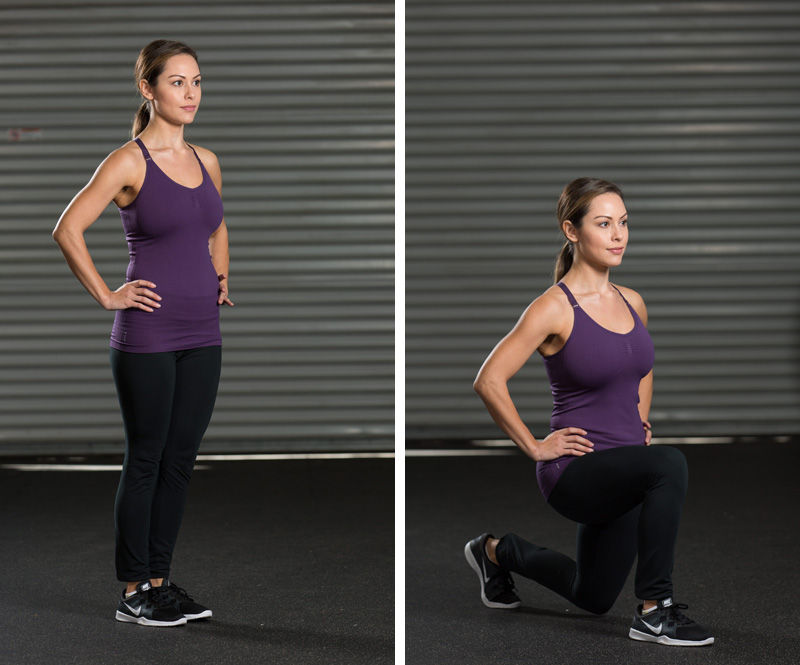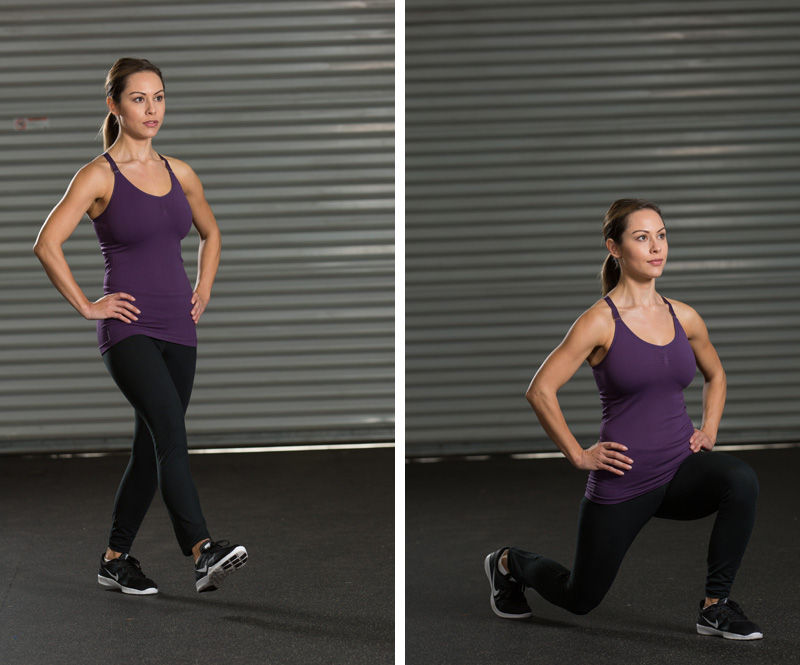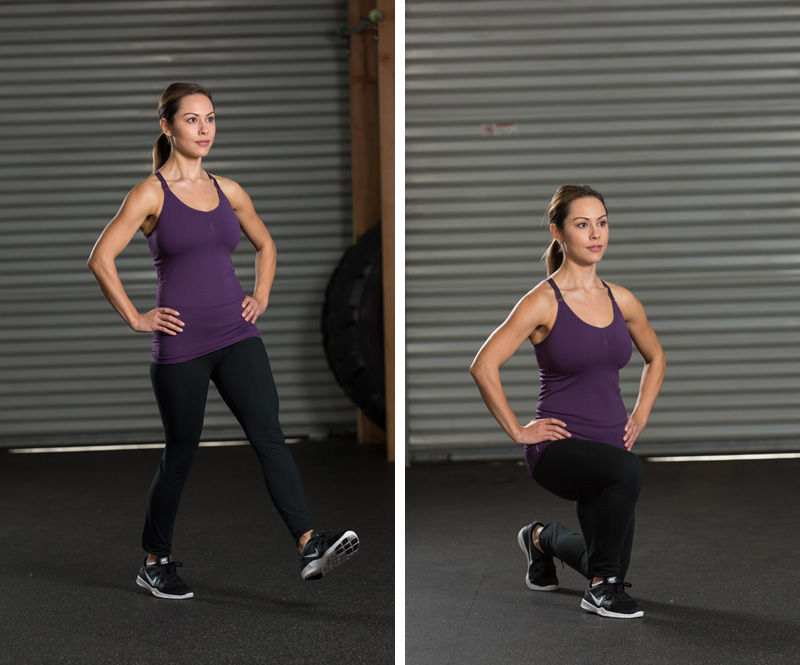Strong, toned, powerful legs build a solid foundation for the body. While squats and deadlifts can be used to start a client’s foundation, lunges can add the perfect finishing touches to his or her quadriceps, hamstrings, glutes and calves. Here are several lunge variations that can be used to add more dynamic and agility-based exercises into your clients’ workout routines.
The Basic Lunge

Start your clients’ lunge training with the basic lunge, sometimes referred to as a forward lunge or simply a lunge, before moving on to more advanced forms of lunging.
Stand with the feet shoulder-width apart and hands by the sides of the body. Take a step forward with the right leg and strike the floor in front of the body with the right heel, followed by the right forefoot. As the right foot hits the floor and stabilizes, bend the right knee and lower the body straight toward the floor. Stop when the right thigh is parallel to the floor. Push the body back to the starting position using the power from the right foot as you try to drive it through the floor. Be sure to keep the right knee in line with the right ankle while in the lunge position. Keep the upper body straight throughout the entire exercise. Repeat on the other leg.
Quick tip: It can be a bit easier for clients to execute the lunge when they think about dropping the back knee straight down toward the floor, as opposed to just concentrating on the lead leg.
Stationary Barbell Lunge

Once your clients master the basic lunge, they may be ready to add weight to the exercise with a barbell lunge. The added weight from the barbell recruits more muscle fibers and increases the heart rate, resulting in a more intense exercise.
Stand with the feet shoulder-width apart, with a barbell resting comfortably on top of the trapezius muscles, just below the back of the neck. For added balance and safety, hold on to each side of the barbell with a forward-facing grip throughout the entire exercise. Take a step forward with the right leg and strike the floor in front of the body with the right heel, followed by the right forefoot. This is the starting position. Bend the right knee and lower the body straight toward the floor. Stop when the right thigh is parallel to the floor. Push the body straight up and back to the starting position using the power from the right foot as you try to drive it through the floor. Be sure to keep the right knee in line with the right ankle while in the lunge position. Keep the upper body straight throughout the entire exercise. Repeat on the other leg.
Medicine Ball Side Lunge

The medicine ball side lunge exercise is great for athletes who need to load up or balance on their lead or back leg. Add speed to this exercise for a bit of balance and agility training.
To begin, stand width the feet wider than the hips and hold a medicine ball at chest level. Take a step to the left, and squat down on the left leg by bending the knee and lowering the body until the left thigh is parallel to the floor. In this position, the toes should be pointed forward and the left knee should be in line with the left ankle. Additionally, hold the medicine ball so that the left hip, elbow and shoulder all line up with the left ankle and knee. Power the body back to the starting position by pushing off the floor with the left foot. Repeat on the other leg.
Walking Lunge

A walking lunge can be performed with just about any type of fitness equipment, including a barbell or dumbbell, but if your client is new to this exercise, begin with just body weight until he or she can execute the move perfectly.
Stand with the feet shoulder-width apart and hands by the sides of the body. Take a step forward with the right leg and strike the floor in front of the body with the right heel, followed by the right forefoot. As the right foot hits the floor and stabilizes, bend the right knee and lower the body down toward the floor. Pause when the right thigh is parallel to the floor. Next, without moving the right leg, swing the left leg forward, striking the floor with the left heel and then the left forefoot. When the left foot hits the floor and stabilizes, bend the left knee and lower the body down toward the floor. Repeat this pattern.
Statue of Liberty Dumbbell Lunge

The title is a mouthful, but this exercise is ideal for enhancing balance, leg strength, coordination and shoulder stability.
Stand with the feet shoulder-width apart and the left hand by the side of the body. Hold a dumbbell in the right hand and extend the right arm straight overhead. (Be sure to hold the dumbbell with a forward-facing grip.) Take a step forward with the left leg and strike the floor in front of the body with the left heel, followed by the left forefoot. As the left foot hits the floor and stabilizes, bend the left knee and lower the body straight toward the floor. Stop when the left thigh is parallel to the floor. Push the body back to the starting position using the power from the left foot as you try to drive it through the floor. Be sure to keep the left knee in line with the left ankle while in the lunge position. Keep the upper body straight throughout the entire exercise. Additionally, hold the dumbbell straight up in the air during the entire exercise. Repeat on the opposite leg and arm.
Backwards Lunge

If your clients want to improve their balance, try the backwards lunge. This lunge variation can be performed with just about any type of fitness equipment, including a barbell or dumbbell, but if your client is new to this exercise, begin with just body weight until he or she can execute the move perfectly.
Stand with the feet shoulder-width apart and the hands by the sides of the body. Take a step backward with the right leg and strike the floor behind the body with the right forefoot. As the right foot lands on the floor and stabilizes, bend the left knee and lower the body down toward the floor. Pause when the left thigh is parallel to the floor. Return to the starting position by pushing off of the right rear foot and straitening out the left leg. Repeat on the other leg. Be sure to keep the upper body straight during the entire exercise.




 by
by 






